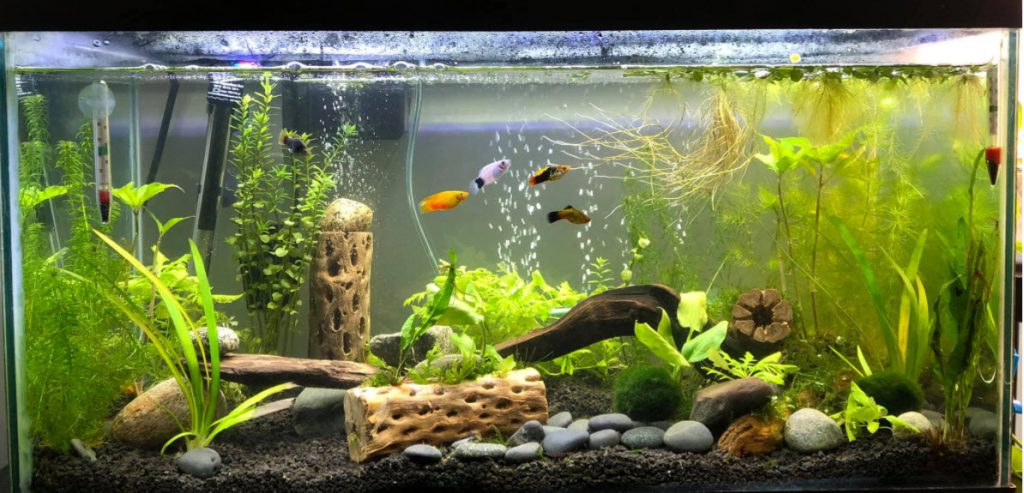
Condensed Version of “Causes of Slow Death”
There are many ways to slowly kill fish in succession. What we do NOT mean by this is when one fish in an aquarium dies. Fish die for unknown causes all the time. Even a fish pathologist who does an “autopsy” on a dead fish will typically be unable to say what killed the fish the majority of the time. If just one or two fish die unexpectedly, don’t beat yourself up. It probably wasn’t your fault.
A common refrain on Facebook aquarium forums is “I’m losing one fish every five days, Help“. This “slow death” is difficult for many to understand. Suffice to say it can be due to about a few hundred “causes”. But the most common are related to how the aquarium is set up. Either the filtration is inadequate, the hobbyist is over-cleaning the filter media or the hobbyist is over-feeding the fish. Sometimes there is poor aeration. Sometimes there is a lot of dying plants. All these deficiencies result in high bacteria counts in the water column which kills the fish both directly and indirectly.

Clean Water
Easily 80% of long-term problems in the aquarium can be traced to something which causes unclean water. There is one very important rule in keeping healthy fish in an aquarium:
.
The Key to Good Fish Health is Clean, Bacteria Free Water
.
Diseases are always best prevented by keeping the water as clean as possible with very heavy filtration. The goal is crystal clear, bacteria-free, over-filtered, ultra-clean water. The “line of causation”, as it is called, is sequential:
- Heavy filtration with lots of brown gunk (heterotrophic beneficial bacteria) removes the food that bacteria in the water column eat (note this process requires many times more surface area than does the ammonia/nitrogen cycle)
- So the bacteria in the water column die
- In the relative bacteria-free water the fish don’t have to devote much of their immune system resources to fighting off the bacteria in the water column
- So the fish have more immune system resources available for fighting off things like fish TB, epistylis, cryptobia, tetrahymena, columnaris, and worms
- So the fish are healthier and live longer
And by the term “clean” we mean crystal-clear, over-filtered, bacteria-free water. We do NOT mean water which is changed frequently. There is a big difference. This is discussed at some length in this link
6.4. Crystal Clear Water
.
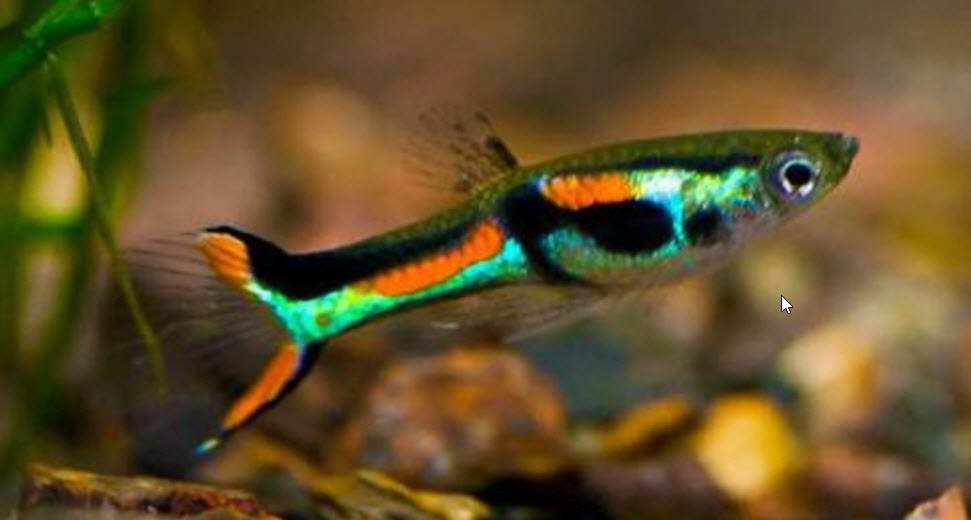
The most important question no one asks on social media is: “Is your water crystal clear?” Everyone in social forums on aquariums, when confronted by someone asking about fish deaths, invariably asks “what are your parameters?“. This is the wrong thing to ask. Water parameters do not kill fish. What should be asked is “If you look down the length of your aquarium, is the water “dull” or is it VERY VERY clear?” For emphasis, the most important question to ask is:
.
If you look down the length of your aquarium, is the water “dull” or is it VERY VERY clear?
.
A healthy tank will have VERY VERY clear water. And I mean crystal clear water. Water where it looks like the fish are swimming in the air. This is VERY important.
Note this does not refer to the cloudy water which comes when one sets up a new aquarium. Most tanks that are “cycling” go through several weeks of “cloudy water” This is just part of the cycling process and the solution to it is to simply do NOTHING. Let Mother Nature sort it out. Again let me repeat that:
With a new tank which has gone cloudy, DO NOTHING. Do not clean ANYTHING for at least three months. Just let it be.
Newbies are invariably doing way too much cleaning and they are harming their tank by doing that. The ecology of the tank is such that it needs time UNCLEANED to do what it needs to do. Most of the time the newcomer needs to cut WAY back on the feeding at the same time.

If the water is “dull” or even “slightly cloudy” after a few months of operation it is full of high concentrations of what is called “heterotrophic” bacteria (and a lot of other microscopic critters). The term “heterotrophic” simply means good old normal bacteria which eat the same type of food the fish do, namely proteins and carbohydrates from fish food and feces.
This high concentration of bacteria in an established aquarium creates real problems. This concentration indirectly results in weakening the fish and allows other organisms to kill them. A thorough discussion of this is found under:
4.3. Free Floating Bacteria
High bacteria count in the water WILL result in a lot of slow fish deaths over weeks or months. Most often there are no disease symptoms in the fish. They just die.
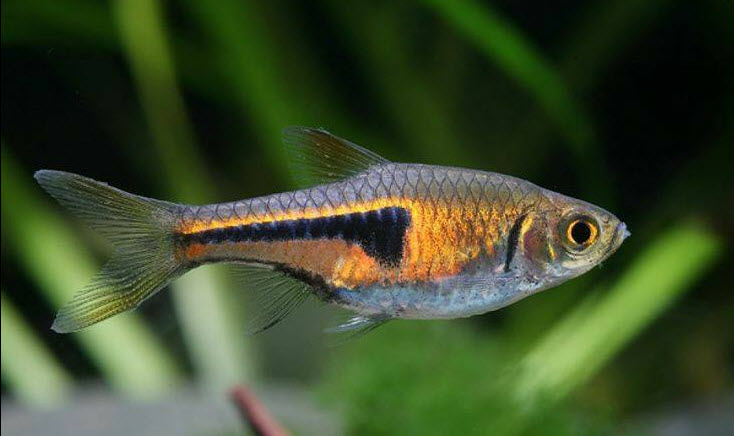
The second most important question is “How much do you feed your fish?” The biggest mistake beginners do is to over-feed their fish. The directions on the food are ridiculous. “two to three times a day an amount they can eat in two minutes” is WAY too much food.
What I recommend for feeding is simple;
.
Feed fish once a day ONLY an amount of food the fish can consume in one minute.
.
If there is food still in the aquarium after one minute you need to cut back on the amount.
A surprising number of times the problem is that the hobbyists are trying to keep moderate amounts of fish with plants. The aeration a moderate amount of fish need is decidedly detrimental to the growth of plants, killing them slowly over months. These slowly dying plants release dissolved organic compounds which feed bacterial growth in the water column (i.e. “dull” water). The bacterial growth kills fish slowly in a variety of ways.
Low filtration surface area, filter cleaning, and overfeeding can all be causes of high water column bacteria counts and “dull” water. Aeration can also be a problem. In most aquariums, a combination of several problems is found.
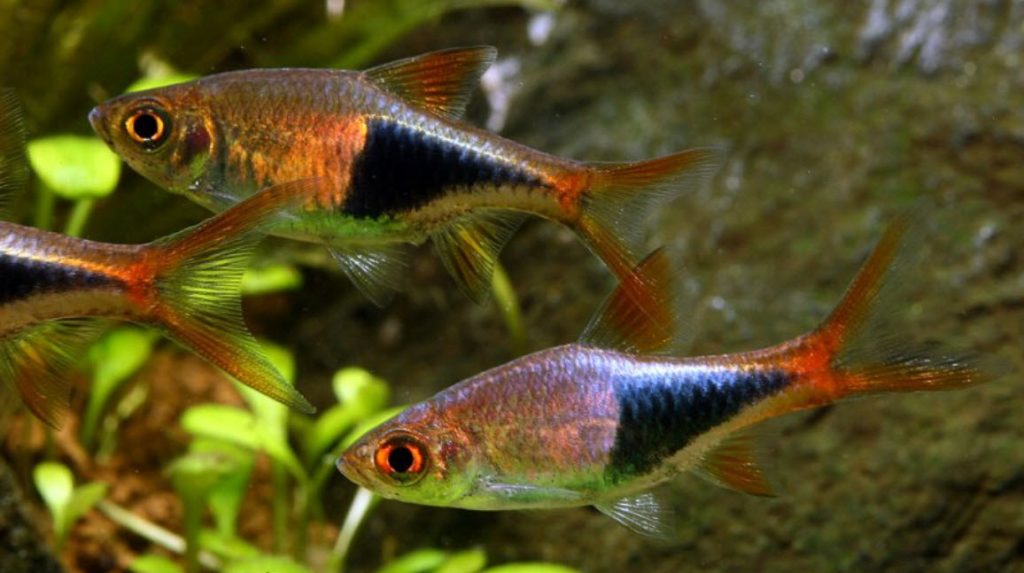
The Long Version of “Causes of Slow Death”
The potential ways to stop the slow deaths can be stated in some greater depth as follows (rough percentages indicate the number of times the problem is seen in new aquariums):
- Insufficient Filter Size or Bad Filter Media (80%)
- Doing Frequent Filter Cleaning or Cartridge Changing (70%)
- Over-feeding (60%)
- Poor Aeration (50%)
- “Fish TB” (30%)
- Dying Plants (20%)
- Ich Look-Alikes (20%)
- Large Substrate (20%)
- Unknown Diseases (20%)
- Genetics (15%)
- “Sick Tank Syndrome” (?)
Most of the time the aquarium has at least two and often many more of these reasons, all piled one on top of one another.
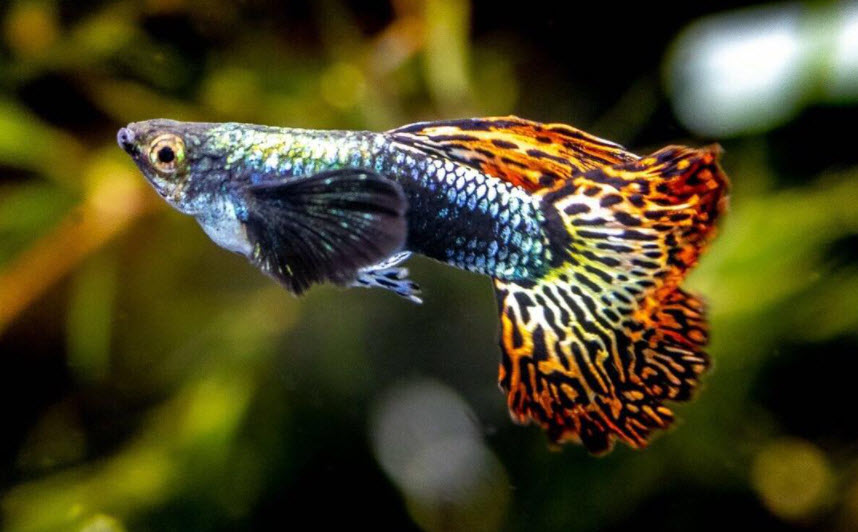
1, Insufficient Filter Size or Bad Filter media
There are too many heterotrophic bacteria in the water column giving cloudy or dull water which doesn’t go away for several weeks. This is usually because the hobbyist has insufficient filter media effective surface area.
Probably the most common filter which gives this problem is a cartridge filter, either an internal cartridge filter (found in the aquarium itself) or an external hang-on-back cartridge filter. Cartridge filters simply have an insufficient volume of biomedia to give decent biofiltration. One can solve this by adding a great deal of filter media effective surface area. This can be accomplished by several means:
A, Making improvements to the cartridge filters per Cory of Aquarium Coop. He recommends taking out trays and cartridges and replacing them with foam blocks and adding a foam pre-filter. Here is a link to how to do that:
8.2. Hang-on-back Filters
.

B, Adding an under-gravel filter (by far the most cost-effective and “best” method). Warning: if you constantly clean under-gravel filters they don’t work. And they are a big pain in the butt. BUT if you just leave them alone, they are a great biofilter at a great price. But nowadays you generally have to buy them over the internet. Here is an article on them:
8.5 Under-gravel Filters
C, Adding a sponge filter. A large sponge filter with very porous foam and an air stone for creating an airlift with lots of bubbles and a long airlift tube is a good biofilter at a very good price. Here is an article on them:
8.4. Sponge Filters
D, Add a canister filter filled with foam, plastic pot scrubbers, or static K1 media in bags. If one has the standard canister media of ceramic rings, bio balls, Matrix, or Biohome, replace this media with those above. The standard media doesn’t have the effective surface area required. These topics are addressed in more depth in these links
8.3. Canister Filters
7. Filter Media
.
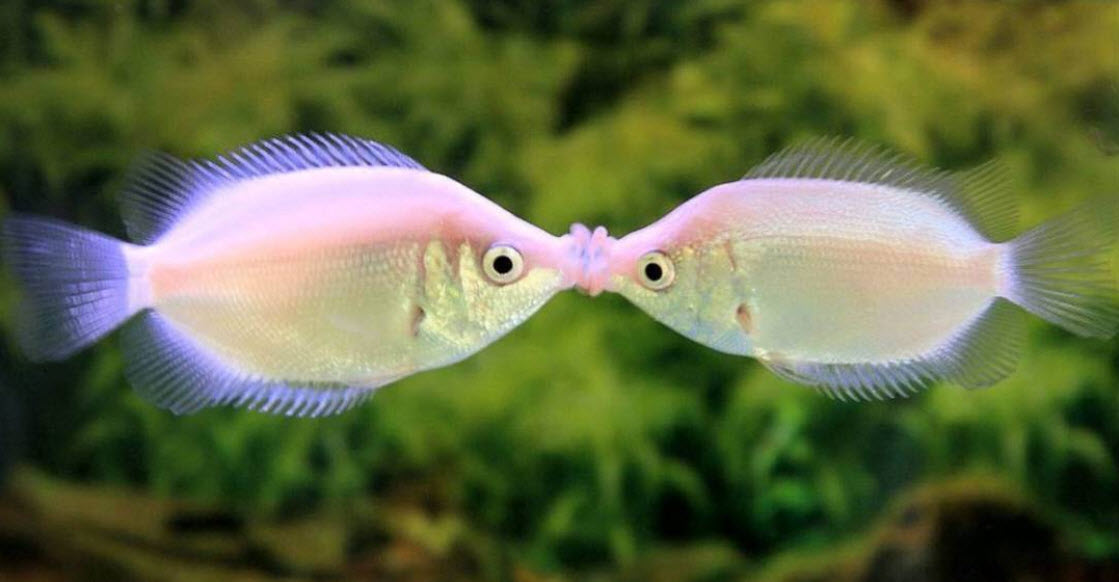
2, Doing Filter Cleaning or Cartridge Changing
There are too many heterotrophic bacteria in the water column because the hobbyist is either cleaning off the “horrible brown gunk (obviously fish poop)” on the filter media or replacing the filter media (typically a cartridge) once a month like the filter directions say to do (biggest scam going which kills lots of fish!). This brown gunk is heterotrophic beneficial bacteria and needs to be preserved. These beneficial bacteria compete with bacteria in the water column for food resources and can thus significantly reduce the bacteria in the water column. “Beneficial bacteria ain’t pretty”. The solution is to:
- Simply stop cleaning off all the brown gunk. Only clean enough to allow free flow through the media
- OR stop changing out the media or the cartridges in the filter.
Cleaning the filter is addressed further in this link:
6.8. Thorough Cleanings
.

3, Over-feeding
There are too many heterotrophic bacteria in the water column because the hobbyist is overfeeding. The directions on the fish food package to “feed fish an amount they can eat in two minutes three times a day is inaccurate. These directions have killed a lot of fish.
What I recommend for feeding is simple;
.
Feed fish once a day ONLY an amount of food the fish can consume in one minute.
.
If there is food still in the aquarium after one minute you need to cut back on the amount.
If one feeds a fish “whenever they beg for food”, one will kill the fish. The biggest mistake beginners do is to over-feed their fish. Fish are cold-blooded creatures that do not need a lot of food. Uneaten food in the aquarium produces bacteria. Bacteria produce toxins. And those toxins can kill fish. Here is a link to an article on this aspect of fish keeping:
3.3. Amount of Food to Feed
.
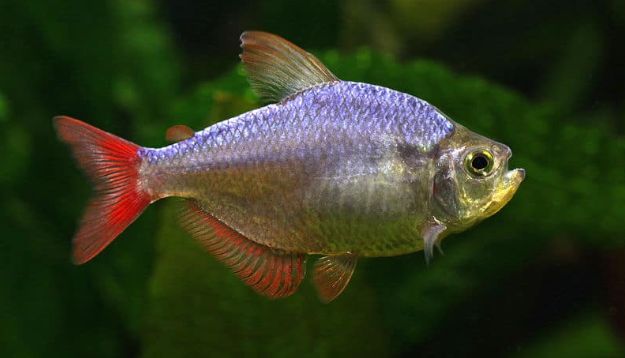
4, Poor Aeration
It is very common for someone to post a photo of their aquarium where fish are dying left and right and ask “What am I doing wrong?“. The photo will show an aquarium where the surface of the water has nary a ripple on it and there are no air stones in the aquarium. This indicates poor aeration. Solve by adding a lot of aeration by:
- Aiming wavemakers or filter outlets at the surface of the tank in such a way as to create a large area of “choppy” waves and/or
- Adding a decent sized air pump and lots of air stones to the aquarium
These solutions are addressed further in this link:
9. Aeration
.
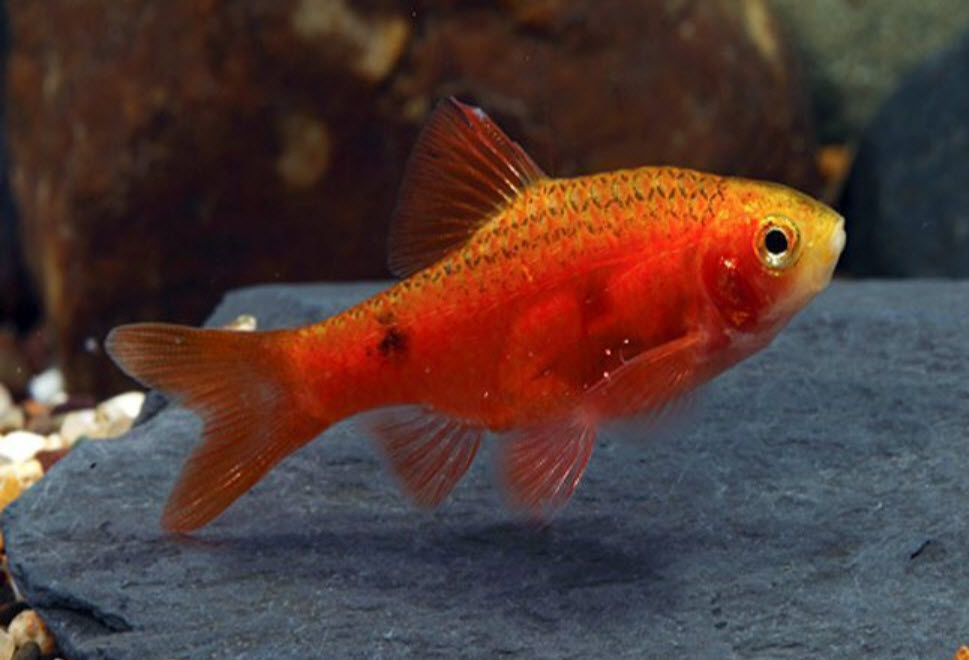
5, “Fish TB”
The biggest “slow” disease killer of fish is something called environmental mycobacteriosis (“fish TB”, fish tuberculosis, or EM). This is called “wasting disease” because the fish sometimes have hollow bellies, heads too large for their bodies, and a gaunt thin appearance. But it should be noted that many times fish TB has no symptoms.
The esteemed fish researcher, Diana Walstad, called fish TB the biggest killer of aquarium fish.
There are no medicines effective against fish TB but fish TB is prevented and even cured by providing crystal-clear, bacteria-free water. For more on this common slow killing, disease click on this link:
10.4. Fish Tuberculosis

Note that putting a UV sterilization unit on the aquarium is a very good option for treating TB. it also reduces some pathogens in the water and improves fish’s health. We don’t like to use it as a “band-aide” on a tank that has insufficient filtration, however. We prefer to have BOTH very good filtration AND a UV unit. This is discussed at length in this link:
14.1. UV Sterilization
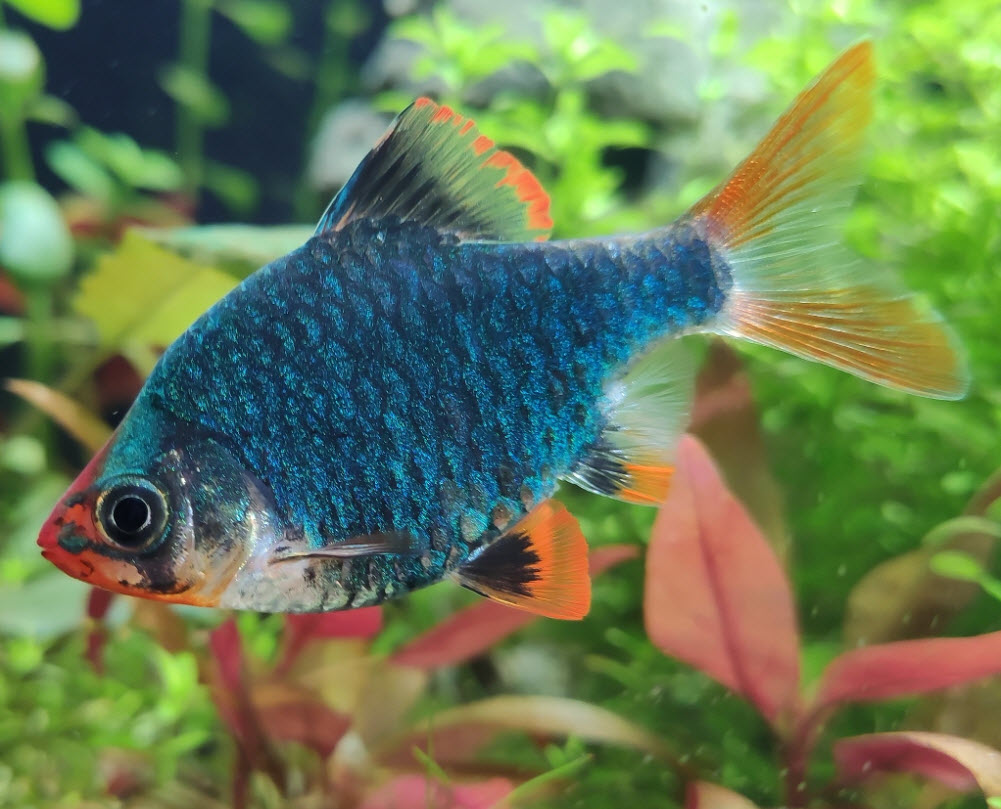
Puntius semifasciolatus Green Tiger Barb
6, Dying Plants
When plants die they do the same thing a dead fish does, they release a host of dissolved organic compounds (DOCs). They just did a lot slower and release the DOCs a lot slower.
It is common for new hobbyists to buy something along the lines of ten fish and ten plants and put them in an aquarium. Because the fish need aeration they throw in some air stones.
Aeration removes carbon dioxide from the water. Many plants need decent to high levels of carbon dioxide. So the plants start slowly dying. They can take many months to succumb leaf by leaf.
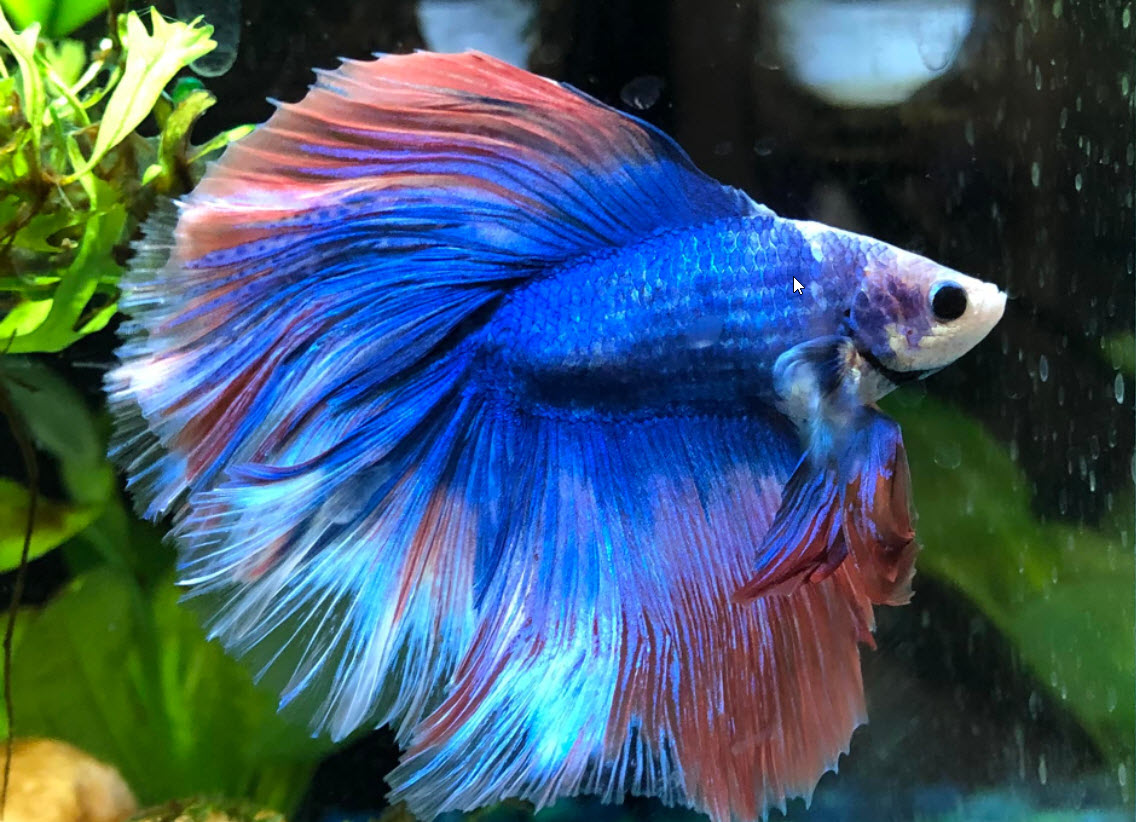
Often the fish owner adds more plants to “keep the aquarium healthy”. And they are doing exactly the opposite. The dying plants are releasing dissolved organic compounds (DOCs). The DOCs feed bacteria. The bacteria reduce the immunity of the fish and produce toxins that further weaken the fish. And the fish keep slowly dying.
The key to a well-planted tank is to have lots of plants and few fish. To understand this more go to this link:
15. Planted Aquarium
.
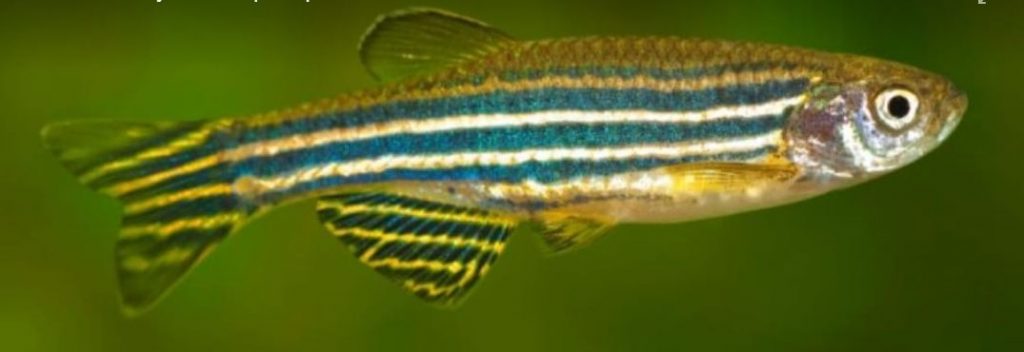
7, Ich Look-Alikes
Another common complaint is that “ich has killed most of my fish“. Newsflash: ich very rarely kills a lot of fish in an aquarium. What the fish keepers are seeing is two diseases that mimic ich: epistylis and tetrahymena. Tetrahymena is generally found in livebearers and epistylis is generally found in other types of fish such as cichlids and loaches. Both these diseases can look very much like ich on the fish.
These two diseases have the same general causes as the “slow deaths with no symptoms”. Both epistylis and tetrahymena thrive in water with a high bacterial count. So these two diseases are best treated by reducing the bacterial count in the water, generally by adding large amounts of biofiltration to the aquarium. In addition, epistylis is treated with antibiotics in the food. These two diseases are covered in these two links:
10.2.4. Epistylis
10.2.6. Tetrahymena

8, Oversized Substrate
A surprising number of “newbie” aquariums use a substrate that is over 8 millimeters in diameter (0.315 inches or 5/16ths of an inch). This large substrate lets food filter down in between the grains and will decidedly add a lot to the bioload of an aquarium. Fish can’t get to the food to eat it. Pea gravel or marbles are not a good substrate for an aquarium.
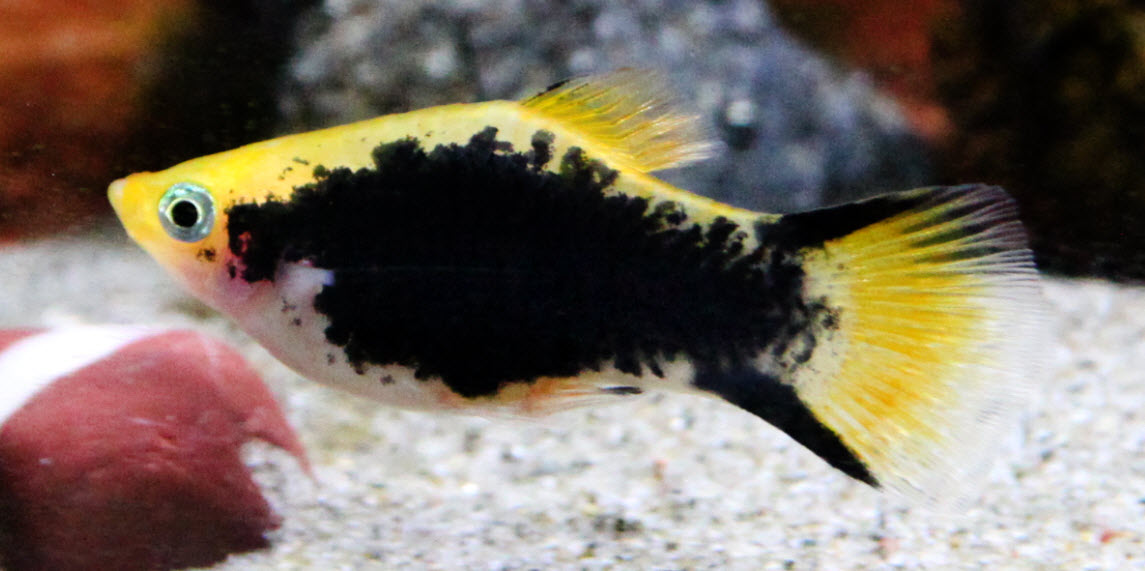
9, Unknown Diseases
Sometimes an aquarium has a series of slow deaths which just can’t be explained. There are no symptoms of disease, the water is run through a huge filter with great media, the water is crystal clean and bacteria-free, aeration is great, there are no plants and the fish are being fed lightly. Three pathogens CAN be at fault: an intestinal worm called capillaria, an intestinal infection called Hexamita (or sometimes incorrectly called “internal parasites”), and bacteria such as Aeromonas.
The best course of action at that point is something called the “shotgun” approach. The hobbyist just treats these three treatable pathogens. This approach is covered in the following link:
12.10. The Shotgun Approach
Sometimes these deaths are simply due to “unknown pathogens”. Sometimes even the best fish labs cannot determine a cause of death.
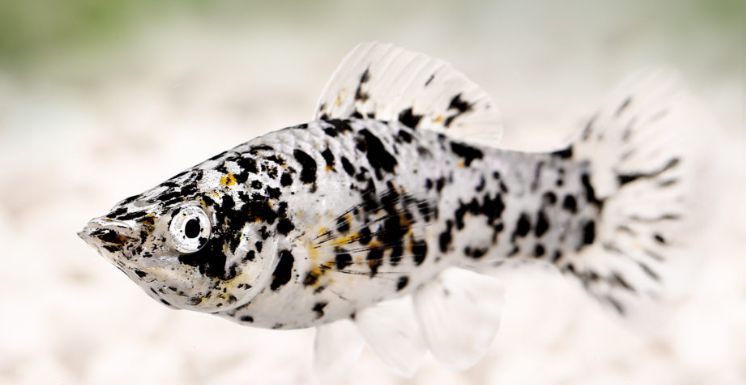
10, Genetics
Many aquarium fish have been genetically compromised. The most common genetic problem is that the fish have been “line bred” for a certain characteristic. This often results in a very small “gene pool”. This small gene pool gives the fish a very low tolerance for many fish diseases. Guppies, mollies, and bettas very commonly have this problem.
“Short bodied” fish like fancy goldfish, balloon mollies, and “short” rams can just keel over and die suddenly for no apparent cause. Alternatively, they can just go into a slow decline for which there is no apparent reason. Their genetics have resulted in compromised body shapes which in turn compromise the ability of their bodies to function. Only a small percentage live to be “old fish”.
Sometimes the methods used to introduce an “electric blue” gene into a line of fish result in some genetic problems which, in turn, result in unhealthy fish. This is true of electric blue Jack Dempsey, electric blue Texas Cichlid, and electric blue Acara,
And sometimes the fish are complex “inter-genetic” hybrids. Parrotfish and Flowerhorns are such hybrids. These tend to have a whole host of health problems and often lead short lives.
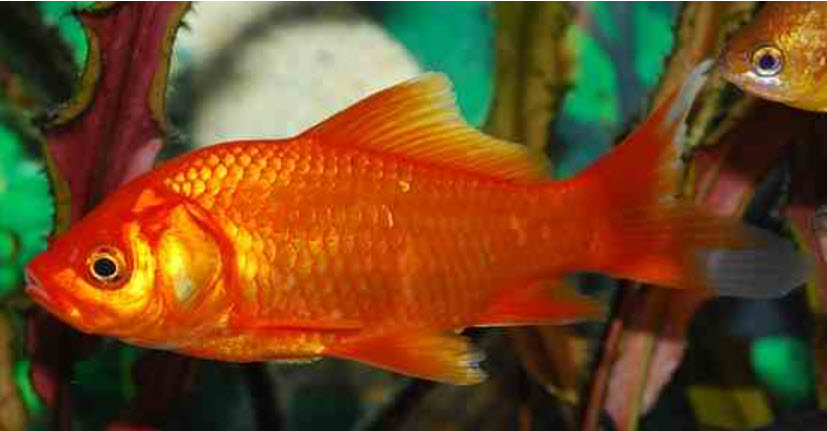
11, Sick Tank Syndrome
A frequent lament on social forums is:
“My water parameters are very good (ammonia 0, nitrite 0, nitrate 0) yet my fish keep dying. Why are my fish dying?”
This is invariably something called “sick tank syndrome”. The water in the aquarium is invariably somewhat “dull” or cloudy, The aquarium will typically have three things going on:
- Biofiltration by a poor filter such as a cartridge internal or hang-on-back filter.
- Overfeeding (more than two eyeballs once a day).
- Food with less than 45% protein in it.
These three things combine to create a very unhealthy aquarium. The line of causation is long and complex but it is explained in depth in this article:
18.7. Sick Tank Syndrome

Adding Chemical Products to the Aquarium
Adding chemicals (including “natural” chemicals) to solve the “problem” is generally counterproductive.
For instance, API Stress Coat is aloe vera gel. Aloe Vera gel is simply a polysaccharide in water. Polysaccharides are polymerized sugars. In the warm water of the aquarium, the polysaccharides break down into sugar quite rapidly. Bacteria love sugar! So suddenly a bacteria bloom breaks out and/or the water gets all foamy. And bacteria in the water is very bad for a fish’s health. Garlic and Indian almond leaves do the same thing. These natural cures are delved into in some depth in this link:
12.4.1. Natural Cures
.

Chemicals like Prime, Safe, and Amquel are simply chemical reducing agents which ONLY remove chlorine. They do absolutely nothing else. They DO NOT affect the ammonia levels, contrary to the claims on the package and social media. This is delved into in-depth in this link:
5.5.4. Prime and Safe
And bacterial starters (“bacteria-in-a-bottle”) such as Seachem Stability have been shown by testing to be worthless. This is explained in this link:
2.8. Bacteria-in-a-bottle Test
Return to Fish Basics Menu
.
Aquarium Science Website
The chapters shown below or on the right side in maroon lead to close to 400 articles on all aspects of keeping a freshwater aquarium. These articles have NO links to profit-making sites and are thus unbiased in their recommendations, unlike all the for-profit sites you will find with Google. Bookmark and browse!
.

Dave says
In reply to Brad …. Yes, you are 100% correct. I’ve had the same problems with mollies and guppies. They slowly die out in my community tanks. Then every once in a while you run across some one who can’t slow down the breeding of guppies and molies and gives them away. These folks have happened on strains’ which are hardy.
Brad - UK says
Hi Dave,
I have had a few fish die slowly, showing signs of deterioration/wasting, then lethargy, and then death. This has been seen in my Mollys and Guppies—as you have said in one of your chapters, they are not hardy fish anymore. But one does worry about the environment.
My Cardinal tetras ( 1 year) have been in the aquarium and look very healthy and no deaths have occurred. Would you say that if the Cardinals being Blackwater fish, are healthy and thriving that the chances are the slow Molly and Guppy deaths are due to their inherent weaknesses?
Thanks as always,
Brad
Dave says
In reply to Tathagata …. It is probably just the heat. Only good solution is to add a cooler.
Tathagata says
Hi Dave,
I have had a few intermittent fish deaths over last 2-3 weeks. There’s no apparent disease.
I follow ALL guidelines (including heavy biofiltration using 30 ppi foam in a EHIEM 600 cannister filter) in this page and have a year old planted tank which was quite stable.
The only thing that’s changed was the climate at the onset of a very dry and hot summer !
I can’t get my tank water temperature below 28C using evaporation with fans and the TDS is roughly 900.
The water has become a little dull recently indicating bacteria in the water column.
Could this be due to the TDS or temperature ? Is there a correlation ?
Dave says
In reply to Nick …. Start out with low stocking and get your Java Fern and Amazon sword growing well first. Then add more and more stock over a period of months as the plants take hold.
Nick says
Hi Dave,
I fear this will be me : “A surprising number of times the problem is that the hobbyists are trying to keep moderate amounts of fish with plants. The aeration a moderate amount of fish need is decidedly detrimental to the growth of plants, killing them slowly over months. These slowly dying plants release dissolved organic compounds which feed bacterial growth in the water column (i.e. “dull” water). The bacterial growth kills fish slowly in a variety of ways.”
Building a 29 gallon with under gravel filter and 3 inches of gravel and 2 power heads and internal cartridge with foam only media, for filters, I was hoping to moderately stock it ( 2 apos, 2 loaches and 2 schools of 10 fish (10 tetras an 10 pencilfish).
It is meant to be a low tech moderately planted tank (only java fern and amazon swords) with low lighting (6 hours).
Now I am worried the plants will slowly die (with the consequences you explained).
Is there no plants that can survive high areration (low CO2), low tech tank with moderated fish stocking?
Dave says
In reply to Jo … Overfeeding and under filtration are your probable causes. Cut back on the food and add a sponge filter for a while. Note I routinely do 90 to 95% water changes with no effect on the fish.
Jo says
A thorough article, thank you. I’m very new to all this and suspect I have been over-feeding and changing too much of the water at a time.
I have platies and danios in a cold water tank. The danios are all fine but the platies are very slowly swimming at the bottom or edge of the tank then dying one by one since the last (too big) water change.
Water tests are all ok.
If I’m right that I’ve got too little “good” bacteria and maybe a disease going round, what can I do about it? Presumably if I replace the platies before sorting it, they’ll just die too.
Dave says
In reply to Chris …. I’m not big on frozen fish food. The food commonly gets “unfrozen” at some point and spoiled frozen fish food is VERY common. And that will kill fish.
Chris says
I have Discus and Rummy Nose Tetra and lately my Tetras have been dying at a rate of 1 every few days. I have 2 cannister filters running only k1 media so filtration and water parameters seem good. No fish shows any sign of illness, I just find them dead for no apparent reason. I thought maybe my water temperature (86 degrees) is too high for tetras, but dont know if that is the cause. Could I be overfeeding? Obly change I recently made was that I started feeding frozen foods to the Discuss and the Tetras love eating that…could that have introduced some problem? Any input will be much appreciated.